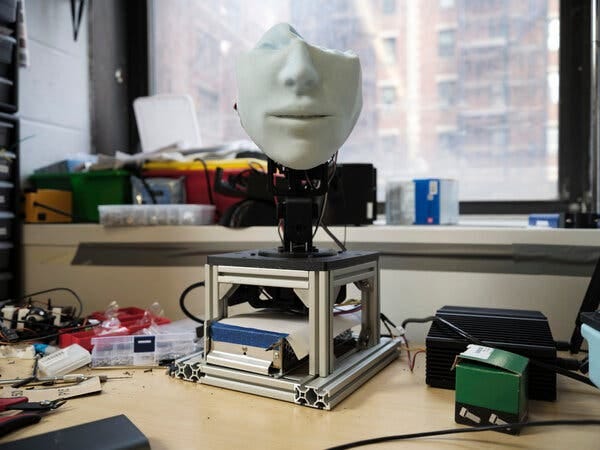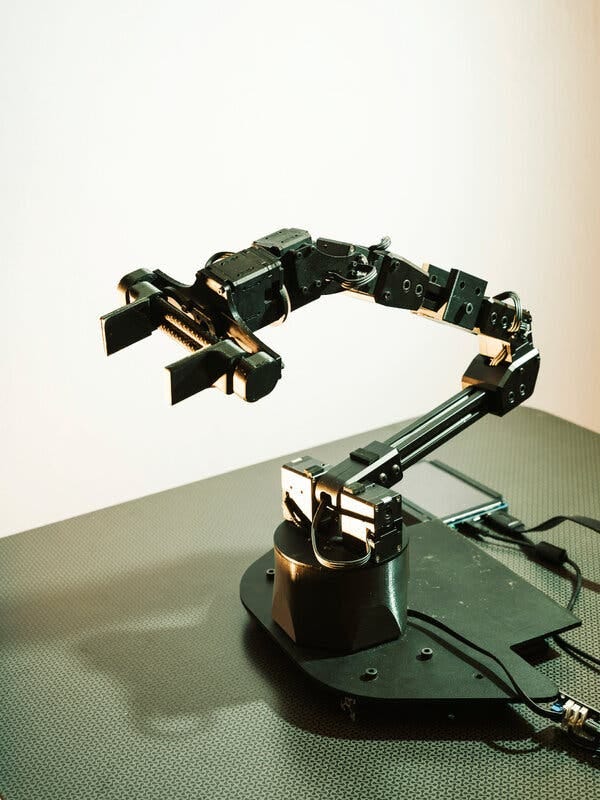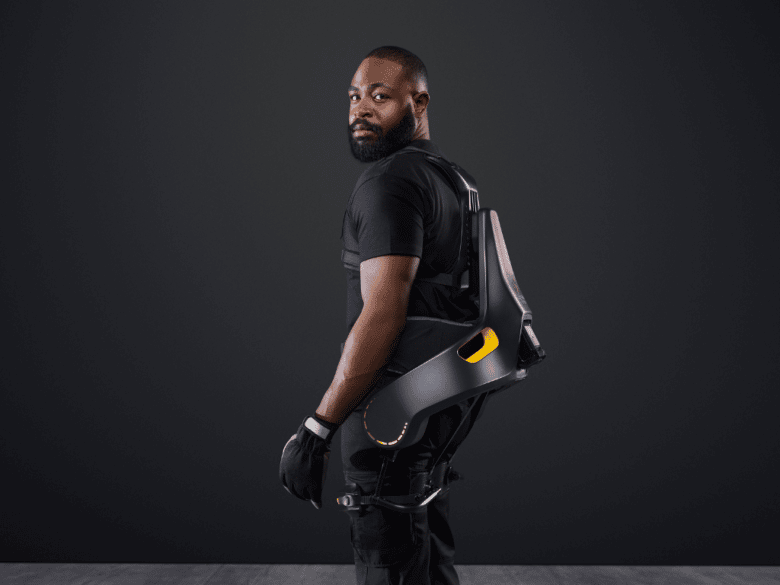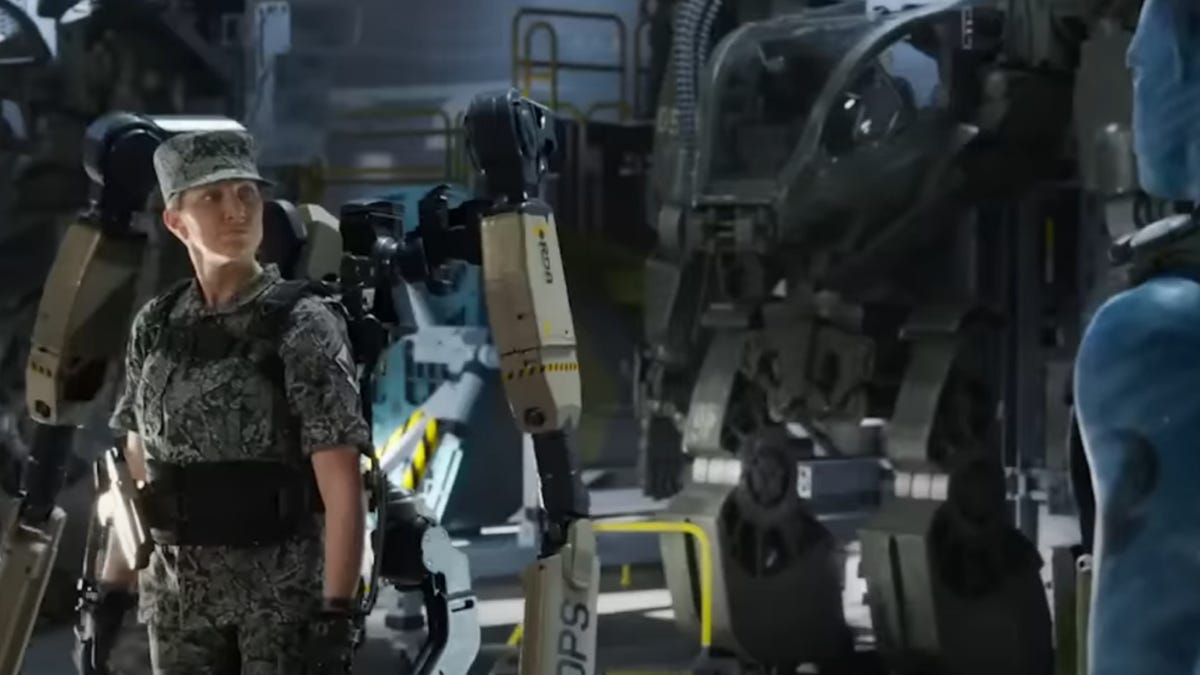c-words: contrivances, consciousness, collaborators, capabilities & ripples in the water
wa've ~ did you see this coming?!
Did you see this coming?! is my (mostly) optimistic view on our changing reality and everything that is in motion. I am trying to make this intersting by adding speculations of what might be, provocations where I can and skepticism where I must. This way I hope to open your eyes and see that possibilities are endless.
Imagine with Humanoid mind
ChatGPT is at Capacity right now…
The C-words
As I am preparing a new project for a global cobot company (short for collaborative robot) I want to use this newsletter as a place where I can share my research, thoughts and insights.
With the help of many resources, reports of institutions and communities I am participating in I would like to give you a idea of what is coming our way.
Robotics have had a huge year in 2022 to refresh you memory read this story and come back to see how they are going to change our lives in 10 to 30 years.
Consciousness
The Copenhagen institute for future studies are looking at how intelligent machines may impact and enhance the work done by humans in the year 2050. In their new edition of FARSIGHT they explore artificial labor.
“We see a steady increase in the use of cobots (short for collaborative robot) made to work together with people. We
can also expect digital assistants to have matured to a level where they can anticipate our needs and offer suggestions for how a task should be solved, including which parts of the task the human co-worker could handle better than the assistant
can on its own”.“It is likely that many things will remain solely in the realm of humanity for some time to come, barring the unlikely development of conscious machines”.
Breaking the wave
I am wondering how unlikely it really is as consciousness in robots was once a taboo but now it’s the last word. When you read this New York times article you might be surprised how close we are to conscious machines. The only thing we need to do is understand consciousness ourselves and agree on the definition.
Members of the Creative Machines Lab use a practical criterion for consciousness: the ability to image yourself in the future. They have emerged a self-aware robot with four hinged legs and a black body with sensors, this robot created a simulation of itself and figured out a method of moving forward without being shown how to walk.
Recently they have revealed a new self-aware machine. A simple two-jointed arm that was fixed to a table. Using cameras set up around it, the robot observed itself as it moved — like a baby in a cradle, watching itself in the mirror. Initially, it had no sense of where it was in space, but over the course of a couple of hours, with the help of a powerful deep-learning algorithm and a probability model, it was able to pick itself out in the world. It has this notion of self, a cloud.
Collaborators
Robots have been around a long time especialy in manufacturing environments. They make the workplace more efficient by collaborating with humans as seperate resources, but it will not take long before we adapt to wearable robotic solutions.
During CES 2023 German Bionic debuted a new AI based power suit to be used in physically demanding jobs, providing increased safety and reduced strain. The movie Avatar 2: The Way of water is a good indicator to see if these exoskeletons will have a future.
Breaking the wave
These solutions will not only make the workplace more efficient, they will make the workplace safer and will accelerate the trend of a four (or three) day workweeks because they will free up more time for workers.
If we look further in time we should not be surprised to see more human like robots enter the workplace. In October of last year Elon Musk presented the latest prototype of a humanoid robot being developed by his Tesla electric car company. The Optimus humanoid can perform simple tasks, such as watering plants, carrying boxes and lifting metal bars.
Will we transition to a society in which robots do the work and people reap the benefits?
For example robots are being deployed to inspect & repair wind turbines, so we won’t have to.
In China, companies like Baidu already pay virtual people ($14,000 per year) to work for them in sectors like financial services, toursim boards and state media. So let’s not be surprised we will do the same with robots, actually the first humanoid, Sophia has already signed a contract with the gaming collective XSET.
Capabilities
As we move towards 2050, machines will become better at what they are good at and thereby becoming better co-workers. The abilities and capabilities are broadening rapidly.
Just have a look at this golf robot (Golfi) that find golf balls on a green and workout how to hit them by itself. Or this robot that can play table tennis and understand empathy during the game.
The FORPHEUS is able to self-diagnose any errors it is making against its opponent, self-adjust for accuracy, and adapt. When playing doubles, the FORPHEUS is able to empathize with its teammate by analyzing motions and inferred emotions in order to bring out the best situation in a team match.
Breaking the wave
The World Economic Forum estimates that by 2025 85 million jobs may be displaced by a shift in the division of labour between humans and machines, while 97 million new roles could emerge that are more adapted to the new division of labour between humans, machines and algorithms.
Austrian coding and robotics company developed a programmable robot solution Robo Wunderkind that helps children to code. I believe in robots helping us to develop our hard skills, but it would be even better if robots could teach us more soft skills.
So what if a new robot helps to regulate themselves? My fellow urgent optimist Mary Martin wrote an interesting scenario about it.
Imagine if… In 2032, the world's leading autonomous robot manufacturer ceases all work on lethal autonomous weapons. It dedicates its engineering efforts and factories to creating therapeutic social companions for kids, and for people of all ages suffering from loneliness, anxiety and depression.
What might this future be like?
Widespread, affordable social robots mark a turning point in the mental health pandemic.
Millions find therapeutic support and help regulating their emotions from their “smart pets.”
Kids’ robot dogs are specially designed to help them develop social and emotional skills, mindfulness and self-regulation.
An advanced “nervous system” in robots allows them to provide loving, supportive, and healing touch to humans.
Ripples in the water
During the holidays I was inspired by
Avatar 2: The Way of Water (movie 2022)
Ex Machina (movie 2015)
Klara and the Sun (book 2021)
The Employees (book 2020)
Don’t forget to read the Artificial Labour report of The Copenhagen institute for future studies as the state some important facts and figures.
By 2025, the capabilities of machines and algorithms will be more broadly employed than before, and the work hours performed by machines will match the time spent working by human beings
It is estimated that human robot collaboration can increase the
efficiency of various industrial operations by 30-40%AI, robotics, and other forms of smart automation, have the potential to bring great economic benefits, contributing up to
USD 16 trillion to global GDP by 203060% of all jobs are estimated to have at least some tasks that could be automated, but only 5% of jobs are under threat of full automation. As AI excels at routine tasks, it can free up humans for more interesting challenges
AI surpasses human capabilities in quantitative analysis, while humans excel at qualitative analysis. By working together, AI sys-tems and humans can augment and complement each other’s skills








